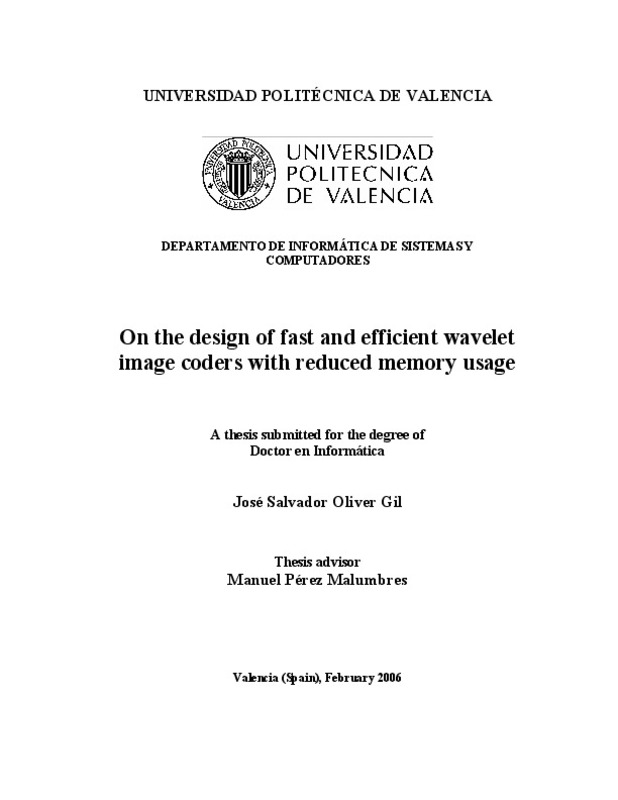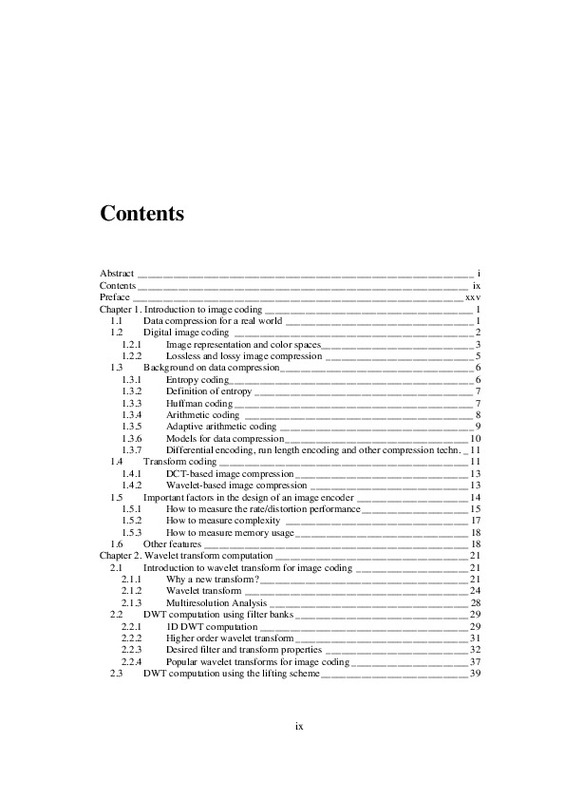- RiuNet repositorio UPV
- :
- Investigación
- :
- Tesis doctorales
- :
- Ver ítem
JavaScript is disabled for your browser. Some features of this site may not work without it.
Buscar en RiuNet
Listar
Mi cuenta
Estadísticas
Ayuda RiuNet
Admin. UPV
On the design of fast and efficient wavelet image coders with reduced memory usage
Mostrar el registro completo del ítem
Oliver Gil, JS. (2006). On the design of fast and efficient wavelet image coders with reduced memory usage [Tesis doctoral]. Universitat Politècnica de València. https://doi.org/10.4995/Thesis/10251/1826
Por favor, use este identificador para citar o enlazar este ítem: http://hdl.handle.net/10251/1826
Ficheros en el ítem
Metadatos del ítem
| Título: | On the design of fast and efficient wavelet image coders with reduced memory usage | |||
| Autor: | ||||
| Director(es): | Perez Malumbres, Manuel Jose | |||
| Entidad UPV: |
|
|||
| Fecha acto/lectura: |
|
|||
| Resumen: |
Image compression is of great importance in multimedia systems and
applications because it drastically reduces bandwidth requirements for
transmission and memory requirements for storage. Although earlier
standards for ...[+]
|
|||
| Palabras clave: |
|
|||
| Código UNESCO: |
|
|||
| Derechos de uso: | Reserva de todos los derechos | |||
| DOI: |
|
|||
| Editorial: |
|
|||
| Tipo: |
|
recommendations
Este ítem aparece en la(s) siguiente(s) colección(ones)
-
Tesis doctorales [5389]







![Text file [Text]](/themes/UPV/images/text.png)



